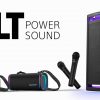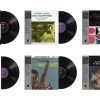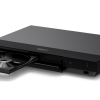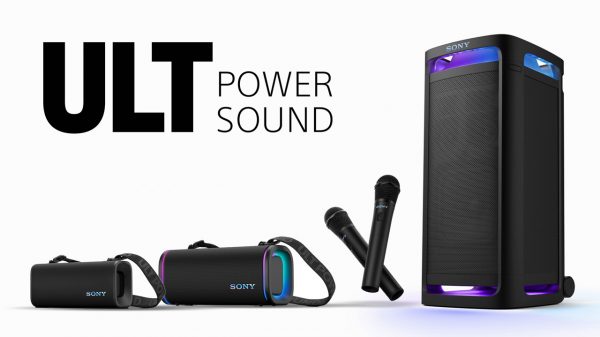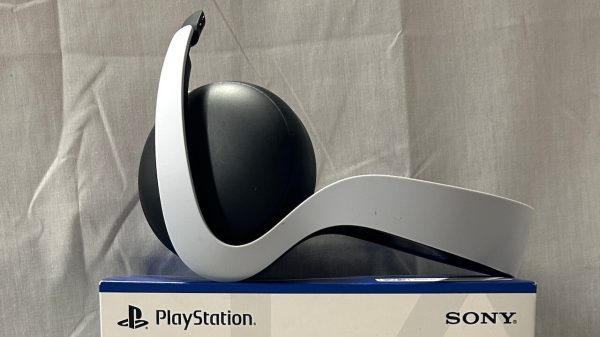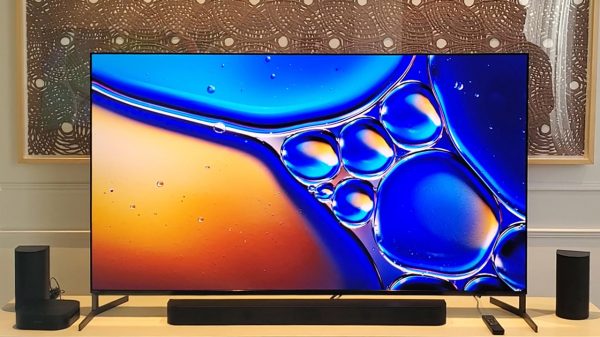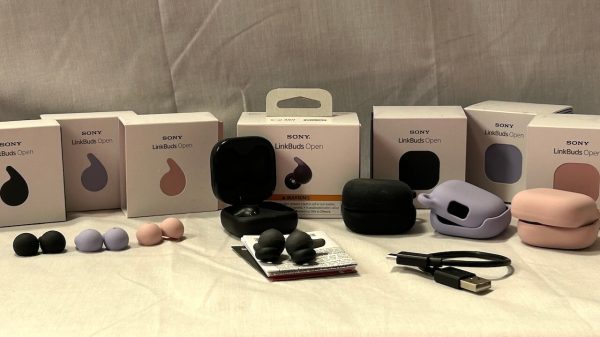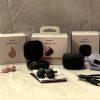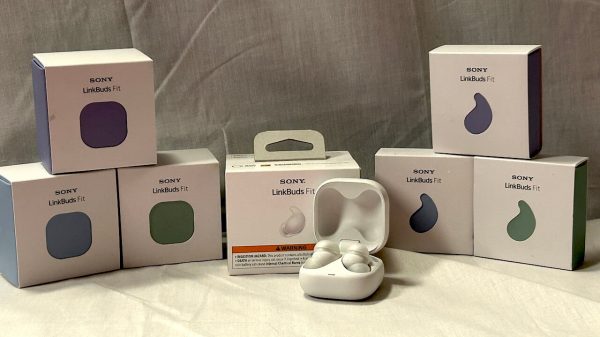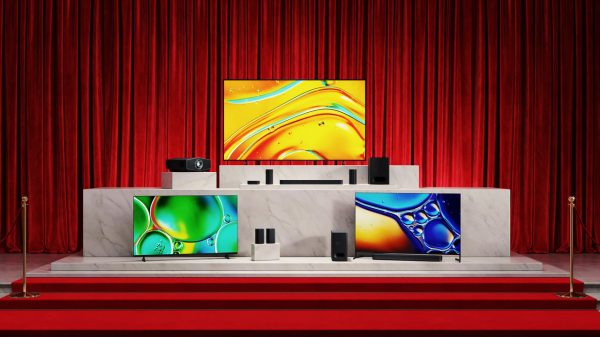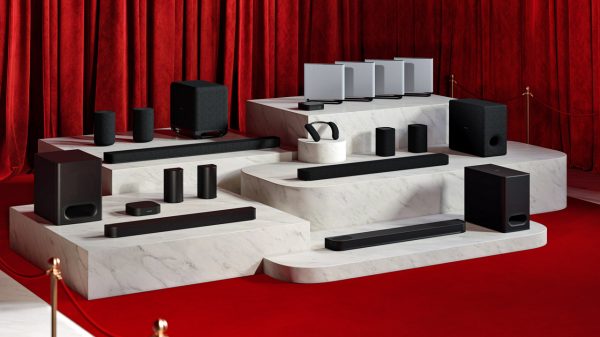Last Update: January, 2025
Note: With Sony 360 Reality Audio being dropped by TIDAL, the future of Sony’s immersive audio format is a bit murky as it’s now that much harder to find music mixed and encoded in the format. Read more about that here:
Is it Game Over for Sony 360 Reality Audio? TIDAL Says Yes.
Immersive sound and spatial audio are two names for one of the most popular trends in music, movies and home theater audio. Both terms describe the same thing: the ability to create an enveloping and immersive sonic experience which brings the listener inside the music, movie or TV program. Immersive sound differs from stereo or traditional surround sound by the inclusion of height elements. Sound comes from not just all around the listener but from above as well. Sometimes even from below.
Dolby Atmos was the first object-based immersive surround sound format, introduced in movie theaters with the film “Brave” in 2012. Dolby Atmos has expanded its footprint from movie theaters into home theater systems, wireless speakers, cell phones, laptops, headphones, soundbars and even cars. Competing formats DTS:X and AURO 3D also augment traditional surround sound with height information but these have both had limited degrees of commercial success.
Tip: Watch our video explaining Sony 360 Reality Audio
Sony released its own immersive sound format called “360 Reality Audio” in 2019. While both are object-based formats, Dolby Atmos typically uses a multi-channel “bed” of sound with sound objects overlaid on top, while 360 Reality Audio remains entirely object-based until playback time. Also, Dolby Atmos uses “cartesian coordinates” to map sounds in space, creating a dome of sound, while Sony 360 Reality Audio uses “polar coordinates” creating a sphere of sound. This can allow sound to come from not only above ear level but also below ear level in Sony 360 Reality Audio.
Our founder Brian Mitchell experienced 360 Reality Audio in a private tour at Sony Pictures Studios and was impressed by what he heard in a system that had speakers at ear level, above ear level (mounted from the ceiling) and below ear level (on the floor). Typical home implementations of 360 Reality Audio (sound bars and receivers) omit the floor speakers and only use speakers at ear level and above ear level.

360 Reality Audio is based on the MPEG-H 3D Audio standard, which uses independent sound objects instead of the previous channel-based recording and mastering system. Sound objects are mapped in 3D space at playback time, depending on the specific playback device. This allows the format to work with a wide variety of speaker configurations and even with headphones.

Sony has been working with music studios to get the format into music releases. As of 2024, Sony states that “over a thousand music tracks have been encoded in 360 Reality Audio” including major releases from new artists as well as classic back catalog tracks. But they’ve been using this number since Fall, 2023 so I suspect the actual count is at least double that in April, 2024. 360 Reality Audio tracks can be found on music streaming services including Amazon Music Unlimited, deezer, nugs.net and Peertracks. Amazon Music currently offers several playlists which highlight songs in the format.
In order for consumers to experience this sound at home, Sony released Bluetooth speakers and sound bars which included multiple drivers, pointing in different directions to reproduce sound coming from all around the listener. The company also released headphones designed to replicate the immersive effects of 360 Reality Audio in a more private environment. The company even offers an “Ear Shape Analyzer” for its wireless Bluetooth headphones as a feature of its mobile headphones app, “Sony | Headphones Connect.” This optimizes the 360 Reality Audio headphone experience for your specific ears.

Sony claims that 360 Reality Audio can be experienced on traditional headphones as well, though our experience with immersive sound has been that it works best over speakers, and the more speakers you have, the better it sounds. To this effect, in February 2023, Sony introduced a new suite of Audio/Video Receivers (AVRs) which include 360 Reality Audio decoding. The company has also begun licensing the tech to third parties such as Denon for use in their own products.

Make 360 Reality Audio a Reality in Your Living Room
In terms of how to experience 360 Reality Audio at home over speakers, there are currently two ways to do this: via “Chromecast Built-in” to a compatible receiver or soundbar or using a compatible source component connected to a compatible receiver or soundbar via HDMI. But that word “compatible” is a bit restrictive right now. As of April, 2024, there are only a handful of devices that support 360RA playback over speakers and with TIDAL abandoning the format in the summer of 2024, we’re left with just a few music services that are supporting 360 Reality Audio.
If you own one of Sony’s new AV receivers introduced in 2023, you can load up either the Amazon Music app or the Deezer app on your phone or mobile device, play a song encoded in 360 Reality Audio on your device and then use the “Chromecast Built-in” function to cast that song to your Sony receiver to play 360RA content on your speakers. You can do the same to one of Sony’s recent soundbars that has 360RA decoding built in. This includes the HT-A5000 and HTA-7000 sound bars (but not the later BRAVIA 8 or BRAVIA 9 soundbars, nor the Bravia Theater Quad speaker system.
The other way to do it is use the Amazon Music app on an Amazon FireTV Cube (3rd Generation), Amazon Fire TV Stick 4K (second generation) and FireTV Stick 4K Max (second generation) and connect that to a receiver that supports 360 Reality Audio using an HDMI cable. There are a few receivers on the market that support 360RA over HDMI, including the Denon AVR-X3800H ($1699.99), AVR-X4800H ($2,499.00) or flagship AVR-A1H ($6,499.00) and the Marantz Cinema 50 ($2,499) and Cinema 40 ($3,499). I’ve tested this with the Amazon FireStick 4K Max latest generation in April, 2024 and found that it works to a Denon AVR-X3800H receiver. But instead of displaying “360RA” on the receiver, it displays “MPEG-H.” This makes sense as the 360RA format is based on the open MPEG-H 3D codec. All channels appeared to come through correctly when playing 360RA content this way.
It’s important to note that music streaming services generally charge a bit more for immersive audio support. In the case of 360 Reality Audio content, you’ll need to subscribe to the “Amazon Music Unlimited” tier on Amazon Music in order to enjoy that immersive music. The same tier requirements apply to playback of Dolby Atmos music on either service.
What About Sony 360 Spatial Sound Mapping?
Sony’s immersive surround sound solutions also include the similarly named 360 Spatial Sound Mapping, which is different from 360 Reality Audio. While 360 Reality Audio is a codec that needs to be present in both the source material and the playback device, 360 Spatial Sound Mapping is a technology that enhances any surround or immersive sound recording by making it more seamless. 360 Spatial Sound Mapping (360SSM) can take a home theater system that has seven speakers plus a subwoofer (5.1.2) and make it sound like it has more speakers. 360SSM creates “phantom channels” in different parts of the room to make the movement and placement of sounds within the sound field smoother and more natural-sounding.
With the format making in-roads in the music industry, those considering a high-end soundbar, home theater receiver or preamp/processor should consider products that support Sony 360 Reality Audio in order to guarantee maximum format compatibility and future readiness.
Updates:
4/4/2024 – confirmed compatibility of FireTV Stick 4K Max to play 360RA content when connected via HDMI to Denon receiver
1/2/25 – removed references to TIDAL as that streaming service dropped support for 360RA in July, 2024.
Related Articles:






